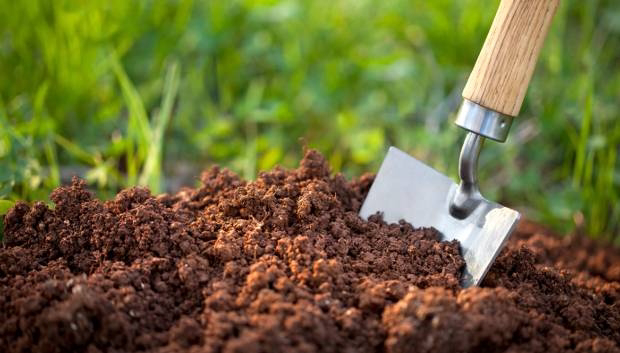The Mystery of Jharkhand's Soil
Jharkhand has the highest number of minerals of any Indian state and is among the largest mineral-producing states in the country, accounting for 16% of the total production in India. These minerals include iron ore, mica, bauxite, copper, uranium and aluminium, as well as other lesser known gems such as garnet, kyanite and sillimanite. It is home to rich reserves of zinc and natural gas. Yet, poverty still remains rampant in many areas of Jharkhand's undulating landscape, which makes it harder to get these resources out of the ground. What are the challenges?
Plant Nutrients, Air & Water
The soil and water in Jharkhand isn't any different from those found anywhere else on Earth. The area has plenty of N, P, K, S and other macro-nutrients that allow plants to grow with vigor. The chemical composition of all these nutrients is similar, so it's not as if plants are somehow drinking up a special type of nutrient-rich solution when they're grown in Jharkhand as opposed to somewhere else. At least not in terms of chemistry; there could be something going on with microorganisms or trace elements we don't yet understand. For example, unlike much of India and Southeast Asia, Jharkhand does have some natural reserves of bauxite (the ore used to make aluminum), which may have contributed to its fertile soils over time. However, most places where large scale farming occurs also boast rich reserves of minerals such as these—so I doubt that explains why cultivators like [name removed] can get higher yields here than almost anywhere else in India. To answer my own question: I don't think people can explain why some fields produce better crops than others—except maybe by saying they were blessed by God! Maybe that's what folks were trying to say back at our first interview! That said... what do you think? Do you know anything about land here in Jharkhand that might give us some clues about how farming conditions compare to places elsewhere? Share your thoughts and help me figure out what makes Jharkhand's soil so magical!
Conditions of Soil in Jharkhand
According to a study published in The Journal of American History, it is known that soil conditions have changed over time. Sand and laterite were dominant soil types at different times during which humans inhabited India. In course of time, however, a combination of agricultural practices, deforestation and other activities caused a substantial change in these characteristics. As late as 1800s there was much forest cover in places such as Deoghar and Singhbhum, Koderma and Hazaribagh districts. By 1900’s these forests had been completely destroyed to make room for jhum cultivation. This form of slash-and-burn agriculture lead to erosion and desertification. Though today forestry has made some comeback but not without harming local ecosystem in many ways.. Further cutting down trees also lead to serious depletion of groundwater levels . Apart from excessive exploitation by local people, inappropriate farming techniques like overexploitation of ground water through boreholes, digging big tubewells or digging deeper tubewells also depleted groundwater levels leading to increased presence of iron and manganese compounds in water. Another reason for poor health condition is wrong irrigation methods like injection and sprinkler systems where most water is wasted by seeping into ground. Excessive use of fertilizers adds salt and phosphorus to groundwater causing even more contamination. All these factors combined with natural geological conditions are causing decline in fertility of Indian soils every year. Each day one third or 7000 hectares(28000 acres) of fertile soil disappear due to changing climate pattern like too much rain and continuous flooding, storms, cyclones while new fertile land is created only 700 hectares per year.(3000 acres). Before Independence agriculture was main source of income for people living in Jharkhand.
Nitrogen & Phosphorus Deficiency
It is generally seen that soils of Eastern region are infertile and their capacity to produce crops decreases with gradual decrease in rainfall. The reason behind it can be deficiency of these two major nutrients i.e. nitrogen and phosphorus in soil. The most common deficient element in Indian soils is N (Nitrogen) followed by P (Phosphorus). Deficiency of both Nitrogen and Phosphorus leads to same type of symptoms i.e. stunted growth, yellowing and reddening leaves, less production etc. In Jharkhand most of soils have deficiency of nitrogen and phosphorus but due to higher pH values they show high levels of exchangeable bases like Ca (Calcium), Mg (Magnesium), Na (Sodium) etc.
Potassium Deficiency
Your banana plants may be suffering from potassium deficiency if your leaves turn yellow and fall prematurely, causing growth to slow. You can treat potassium deficiency by adding a slow-release fertilizer that contains potassium to your soil. If you don’t have any available, create a home remedy by mixing equal parts molasses and water and soaking an eggshell in it overnight. After soaking, crumble up the eggshell and add it to your soil. Repeat every two weeks until you see an improvement in your plant’s health.
Calcium Deficiency
The root cause of multiple problems in plants is their deficiency in calcium. It not only impairs plant growth, but also affects fruit development, flowering and even reduces yield.
Understanding Micronutrients
Micronutrients are a common term used to describe various trace elements, such as magnesium, potassium, calcium and iron that plants need to grow. As you’ve probably guessed from its name, in general a smaller amount of these micronutrients is required for normal plant growth than macronutrients like nitrogen or phosphorus. In fact, most plants only require small quantities of micronutrients in order to survive and remain healthy. The question is why?
Looking After Our Soils
It’s a problem most people aren’t aware of. While in our cities and towns we talk about recycling and saving water, when it comes to our farmland, soil conservation is still not on our radar. And yet, poor soil conditions can have a greater impact on us than we realize. In fact, it is one of the reasons that India has been unable to increase food production enough to make sure everyone in India gets adequate nutrition—even though farmers have been working hard for years. When you think about what plants need from soil—good water retention and good drainage—it’s pretty easy to see how poor soil health contributes to climate change and interferes with overall development efforts.




Comments
Post a Comment
hope you are satisfied with the information. thank you